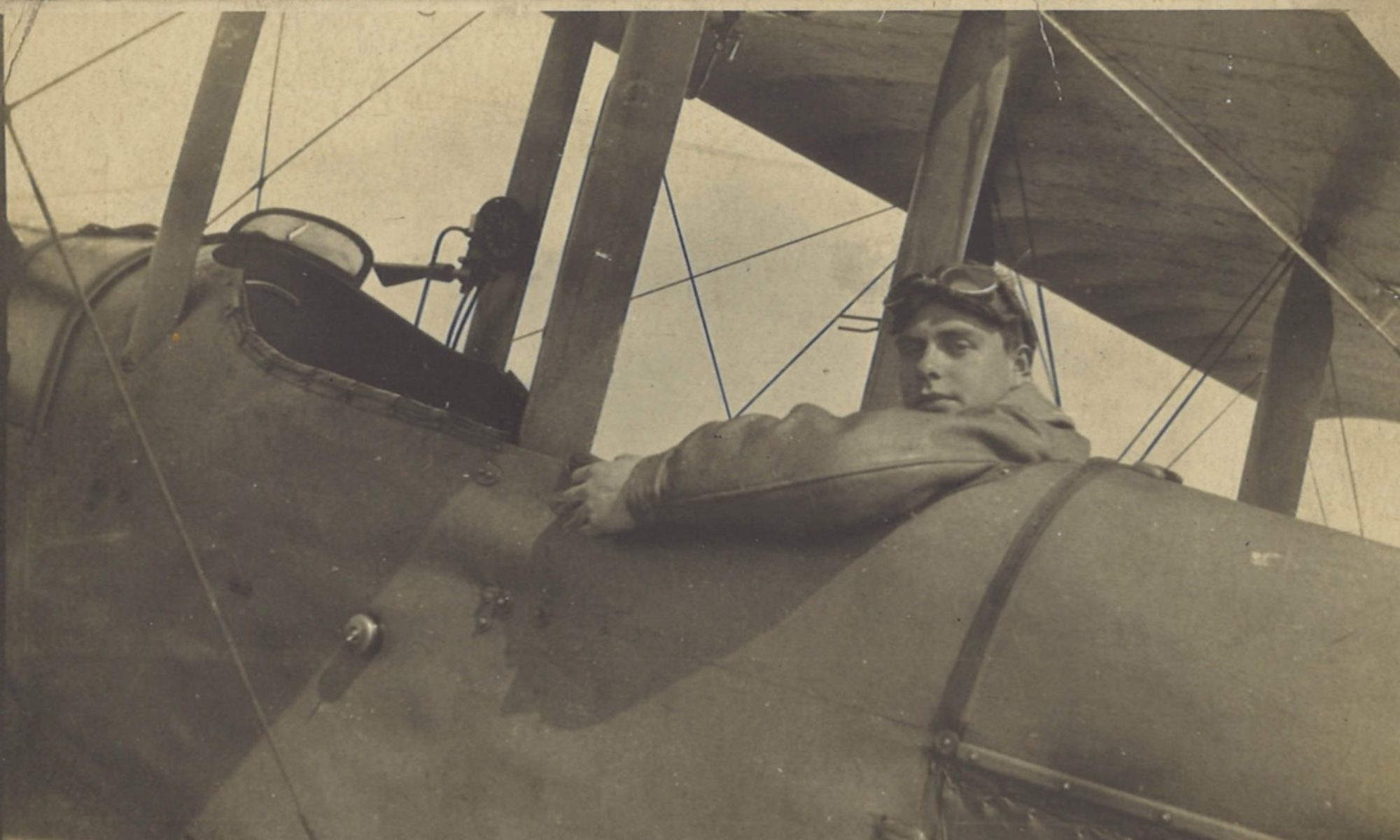In another photo taken at Abscon, RE8 4889 (actually D4889) stands on the airfield with the cité ouvrière and the spire of Abscon church in the background. Pilot and observer are in position, as is the Lewis gun on the Scarff ring – but so are the wheel-chocks. And there are no ground crew in evidence, so this looks like a posed photo.

RE8 4889
In January 1919, RE8 4889 was in a scruffy state. Scratches, patches and scuff marks are all over it. It used to be pristine. In fact, this is the shiny state in which we saw the same aircraft previously. In the post for 27 August 1918 it was pictured with Capt. Bill Ledlie standing proprietorially in front of the gleaming aircraft:

In this older photograph (probably taken at Rely, to where 42 Squadron had moved on 25 April 1918) the aircraft was clearly pretty new. It had been built by Napier and delivered to the squadron on 8 July 1918. It stayed with them until 28 January 1919. On that day Lt Judd ferried 4889 to St Omer, where 13 Squadron took charge of it. It had survived its time of active war service without major incident.
Possibly 4889 was the aircraft that Capt. Ledlie often flew. The squadron designation was ‘B1’, and Capt. Ledlie was the flight commander of ‘B’ flight. So he might have been the pilot in the photo at Abscon. But Capt. Ledlie didn’t have exclusive use of it. For instance, Greg flew 4889 on 6 October 1918 and 7 October 1918. More likely, since the photograph came from Lt McDermont, who later emigrated to New Zealand, it was he who was the pilot in the January 1919 photo.
The Abscon RE8 Photographs
This photograph is one of a series of aeroplanes and crew taken – probably at least semi-officially – at Abscon. Two others have been posted in previous weeks, one (of 2872) from Greg’s collection and one (of 2924) from the Air Force Museum of New Zealand, as this one was.
No doubt there are others in museums and dusty attics around the world. And more still that have been lost or destroyed.
Abscon Church
In the January 1919 photograph of 4889, the stubby spire of Abscon church rises above the house behind the tail of the aircraft. That church is now gone. According to French Wikipedia:
The old church, built in 1892 and closed to worship in July 1969 because of mining subsidence, was replaced by a new building inaugurated in 1981.
It was the stubbiness of this spire that made me think that the spire in the photograph in the post for 28 December 1918 was probably not Abscon’s, but more likely to be that of Saultain:
Thanks once more to…
- Matthew O’Sullivan, Keeper of Photographs at the Air Force Museum of New Zealand for granting permission to use the photo.
- Andrew Pentland of www.airhistory.org.uk, whose Royal Flying Corps pages contain information about RE8 D4889.



























